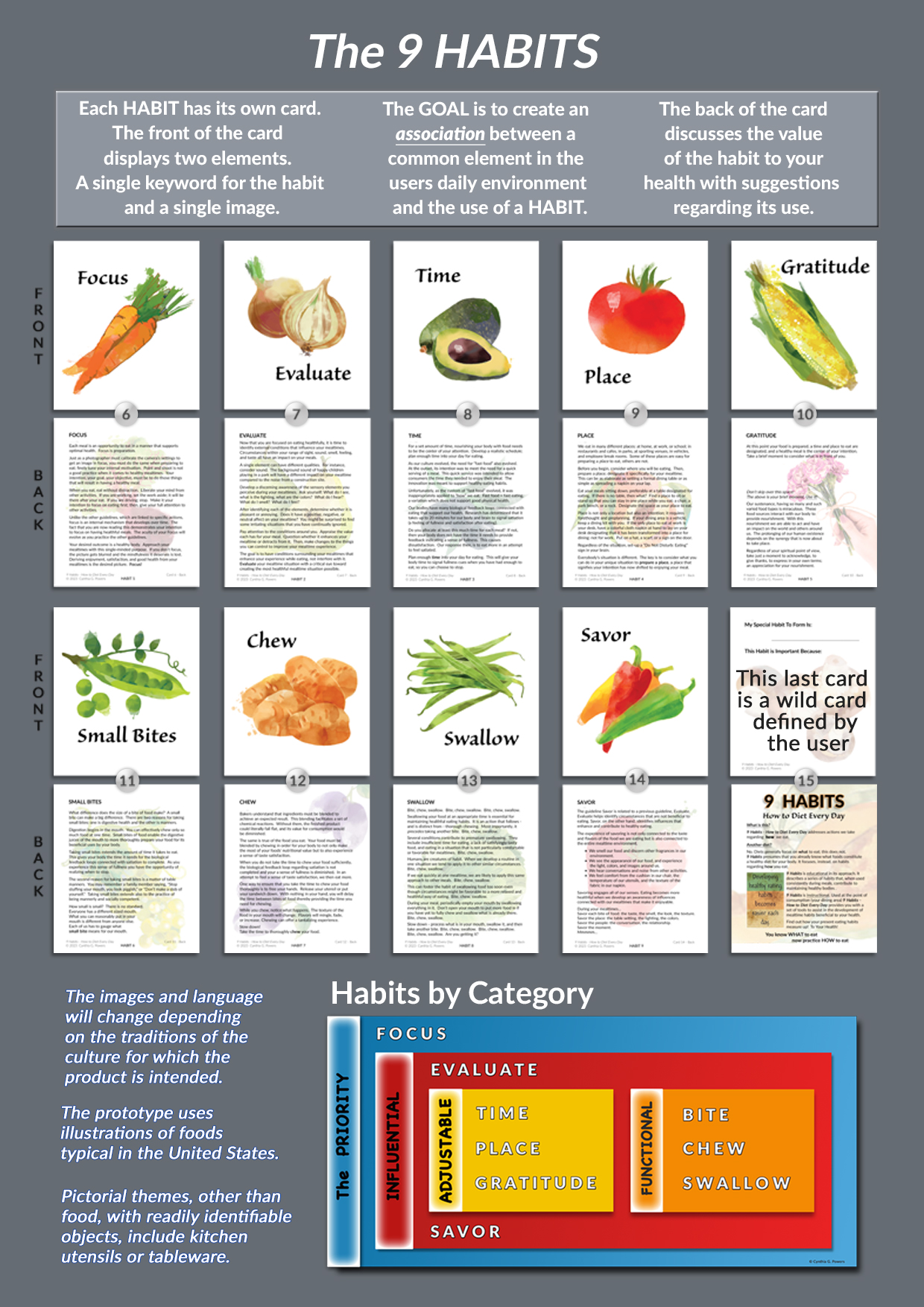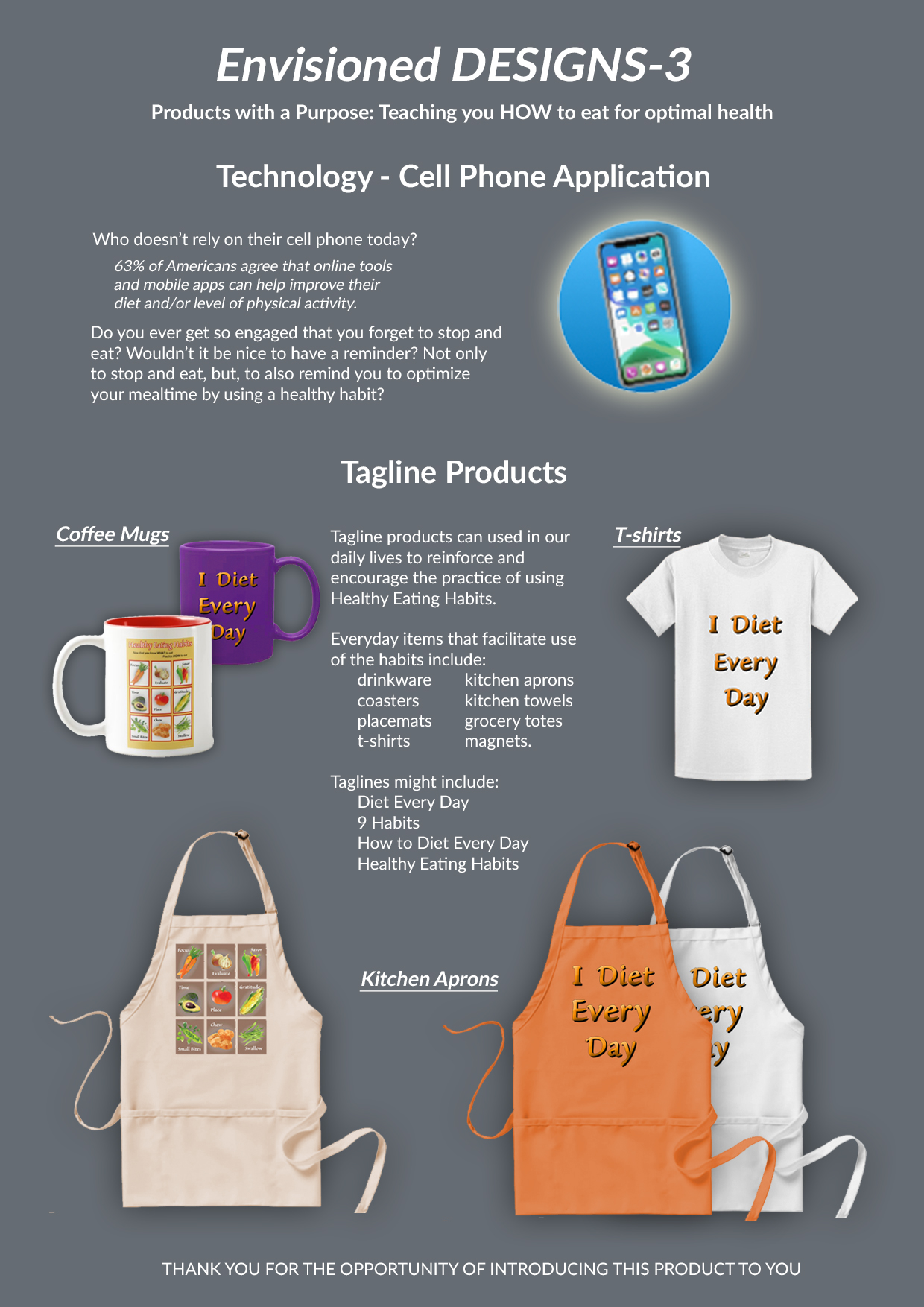9 Habits - How to Diet Every Day


Architect / Designer:
Studio:
Copyright:
Country:
Most of the world’s population live in countries where overweight and obesity kills more people than underweight….Obesity is preventable.
World Health Organization – 9 June 2021.
In the United States people consume 10%-20% more calories than they use.
‘9 Habits – How to Diet Every Day’ provides a potential solution to this world wide concern. It’s purpose is to assist the individual with transforming unhealthy mealtime habits into ones that promote and enhance good health. It combines elements of design and art to create a series of products that easily integrate with one’s day-to-day life.
The phrase “diet every day” does NOT refer to what to eat. Instead, ‘9 Habits’ addresses lifelong habits regarding HOW we eat. The inspiration for this product was the recollection of an interchange from years earlier.
As we met in the middle of the hallway the gentleman greeted me with:
“I bet you’ve never had to diet a day in your life.”
Flustered and without thinking, I responded: “I diet every day.”
The unconventional greeting, as well as the spontaneity of the response, gave rise to the question “Is this true? Do I diet every day? If so, what does that mean?”
Answering that question gave rise to extensive research. The result is the identification of nine behaviors, or habits, that apply universally. When used as a function of habit during mealtimes, they contribute to an individual’s good health; and, part of that good health is a normal body weight.
‘9 Habits’ is educational in its approach; it is instructional in its application. From the perspective of use, mealtimes are a key component for learning how to diet every day. The product has its place on the traditional dining table in the same way that salt and pepper or napkins do. The mealtime is the perfect situation for introducing, encouraging, and using healthy eating habits.
The product design fuses three types of sensory input – they are: a single word, an image, and a text explanation. The text describes the importance of each habit. This appeals to our sense of logic as well as engaging our intellect and ability to reason. The other two elements, an image and a single word, on the other hand, appeal to our aesthetic senses. Each image is an eye-catching and colorful rendition of a food item common to a given culture. Its purpose is to form a visual association (and even a taste association) with a good habit. The single word, when heard or seen, serves as a reminder to use the associated healthy habit.
Recognizing that meals (or food items for nourishment) are consumed in a variety of situations, and at various times of day, led to an expansion of products beyond the tabletop. They include posters and prints (attractive visual displays for walls and tabletops); a cell phone application; mugs, kitchen aprons, t-shirts, coasters and other ‘diet every day’ tag line items. Unique, yet, common everyday devices that remind us to change our existing behaviors into preferred habits.
Viable
My experience of product design is that it is a capricious construct. You either have a problem to design a product for; or, you seek a design that can be applied to solving a problem.
Our exposure to different elements over time impact the design solutions we create. ‘9 Habits’ started out as a small writing project which blossomed into the need for research. This research indicated that there was a world wide health problem needing a solution; 9 Habits is a potential solution.
At the time, I did not realize how my activities of the past 30 years had prepared me for this present venture. As an owner of a B2B service business I designed brochures, ad campaigns, websites, company logos, & slogans. I wrote the marketing materials, training materials, client communications, & designed all the forms to run the business. I took all the photographs & processed the videos. In essence, without realizing it, I was developing the skills I needed to move forward on the project you see here.









